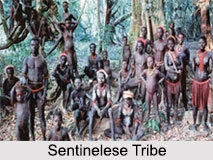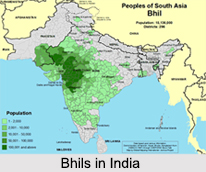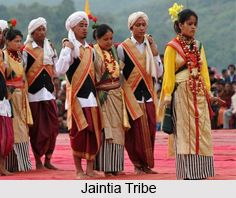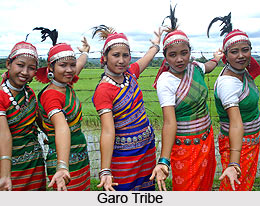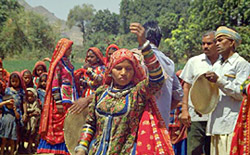The Padhar tribes of Gujarat have occupied a major position in the tribal communities of India. Padhar tribal community is one of the scheduled tribal communities of the state of Gujarat and is reckoned as one of the most ancient tribal groups of Gujarat. This tribal people are also known as Bahelia, Chita Pardhi, Lango Pardhi, Paidia, Paradi, Paria, Phans Pardhi, Takankar and Takia.
The Padhar tribes are centred in and around the the lakes and fertile areas of Ahmedabad, Nal Sarovar in Bhal region and Surencranagar. This tribal community has migrated from Sindh. The Padhar tribes are distributed mainly in some areas like DEvadthal, Shahpur, Dharji, Sahiyal, Nam Katechi, Ralal, Ranagadh, Parnala, Parali, Anandpur and Godi of Ahmedabad. The language of the Padhar tribal groups is popularly known as Pardhi. Some of them are also well conversant in Gujarati language. The Padhar community is divided in various clans that are Bhuwatra, Domda, Pachani, Lalni, Samatiya, Devhala, Vatra, Sapra, Tarajiya, Dharijiya, Tanhada, Kanotara etc. Marriages are prohibited among the Tarajiya and Vatra, Lalni and Pachani tribal communities as they share fraternity bonds among themselves.
The Padhar tribes are basically non vegetarians and their meals include ample consumption of meats and fish though they prefer to include several pulses in their regular diet. Their staple foods are rice and jawar. They prepare a dish known as `khichri` with rice for their tiffin in the evening.
The culture of a community is identified by the art and cultural sides they exhibit. Amongst the various yardsticks that can be used to understand it, artistic acumen is quite an important one. In fact, there is a plethora of artistic products that these Padhar tribes have made. Colorful clothes, animal figures forms are some of the exquisite items that have got demands in the whole of the region and also in the rest of the country.
Monogamy is practiced in the society of the Padhar tribe. The girls and boys are engaged at an early age of ten to fifteen years and social marriage is conducted later at a mature age. Widow re marriage is permitted in their society. The marriage is celebrated by inviting all the relatives and kiths and kins of the bride and bridegroom with foods and drinks. Their society is controlled by Panchayat. The head of the clan, Agawan represent each clan and is authorized to take necessary steps if any problem occurs in the community. Apart from the Agawan, there are some others in the Panchayat to hold the responsibility of the clans namely, Patel, Kotwal, Bhuwa etc. Apart from the Panchayat, there is a big Panchayat named Bara Gaon Ni Nyat where matters are dealt by the headman.
Though the Padhar tribal community is basically land owning community many of them are landless. Among the landowners, moth, moong, cotton, paddy, jowar, millet, paddy and wheat are cultivated. Apart from cultivation and doing labour works, some are engaged in fishing. Moreover, the Padhar people also earn their livings by digging roots, grass cutting, labouring in fields, hunting animals and some are also engaged in government and private services.
The people of Padhar community are basically the followers of Hindu religion and their main deities are Hinglaj mata, Jhupali, Kalika, Meladi, But Mata, Verai mata, Mahakali, Maladi, Chamunda, Khodiyar mata. They consider these deities as the forms of Shakti. Apart from worshipping the goddesses, they revere Lord Krishna, Lord Shiva, Swaminarayan and Lord Ram. The people of this community go to the temples and shrines to worship the deities. A temple of Hinglaj Mata is situated in the village of the Padhar tribes.
There is also no dearth of festivals in the Padhar tribal community. During the festive seasons, the mood of frenzy and festivity is being hyped with lots of dancing, music and merry making. Padhar dance is one of the important dance forms that have been popular amongst the whole of the Padhar community. In it, performers replicate the recurring movements of wandering mariners and the rising and falling of the sea waves. The men and women of this community take part in Dandiaras and Garba. Other tribal communities who live in the adjoining regions have adapted to some of the cultural elements of this Padhar tribal community. The people celebrate Navaratri, Holi, Satam, Dhuleti, Atham, Dussehra, Rakhi etc.
The Padhar tribal community is jovial, cultural and social people. They are religious and are the worshipper of various gods and goddesses including Hindu deities and local tribal deities.

















